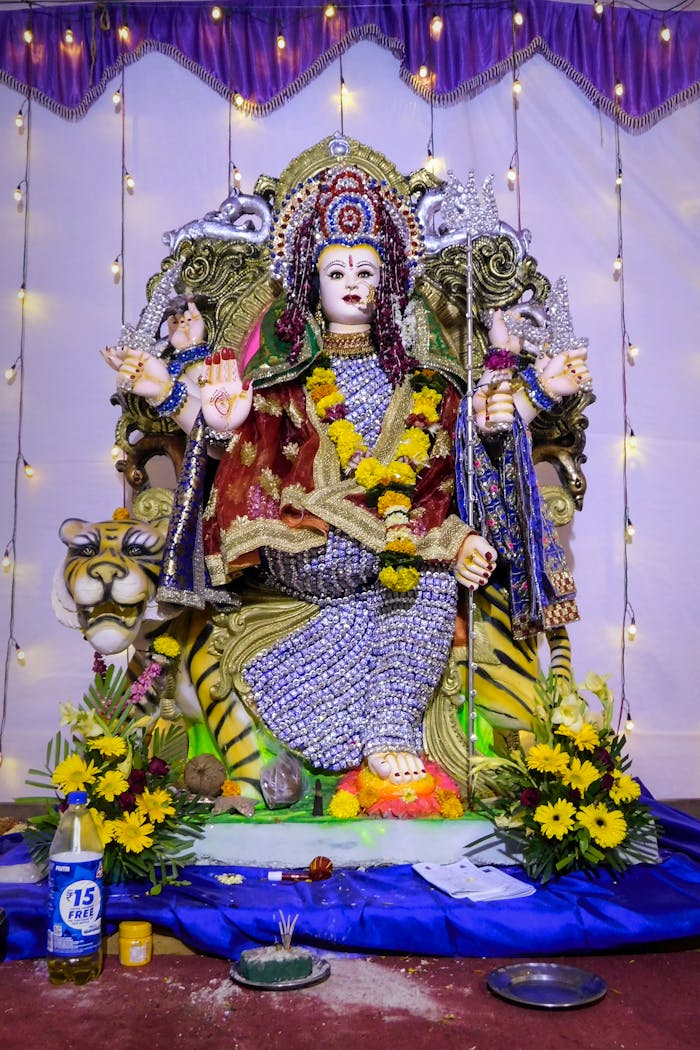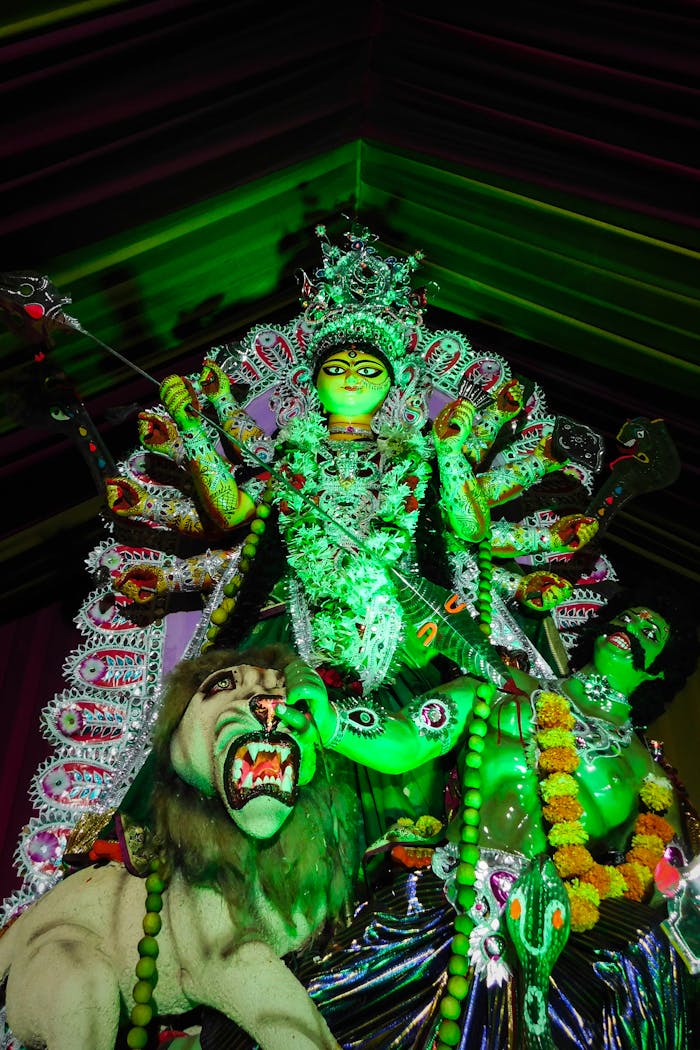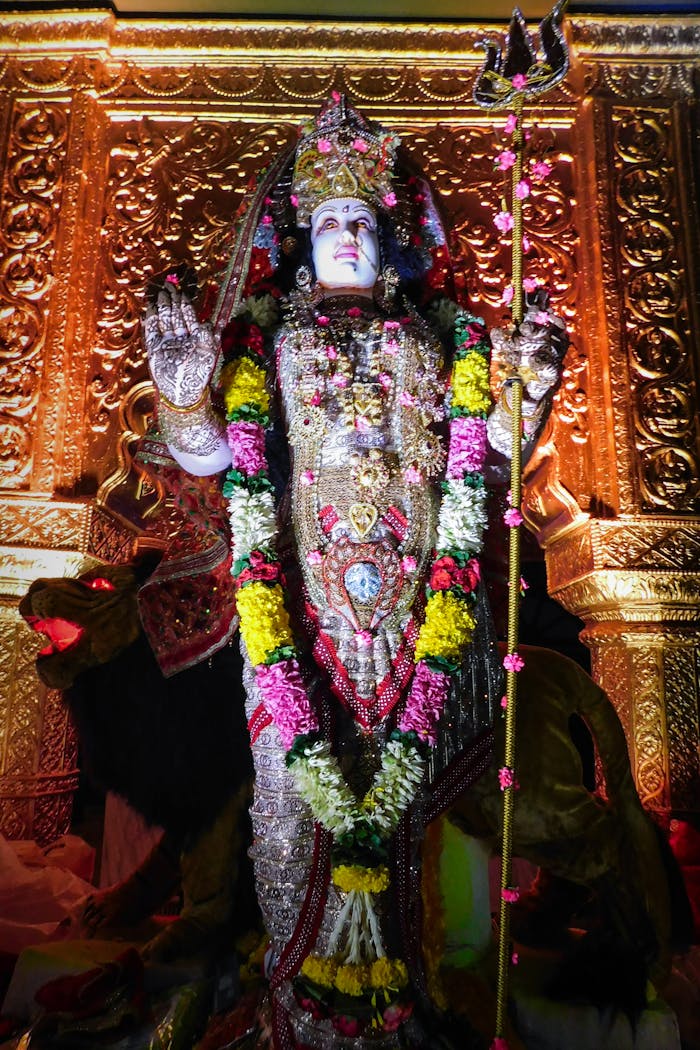Introduction to Maa Baglamukhi
The Baglamukhi Mata Mandir Nalkheda is a prominent pilgrimage site dedicated to Goddess Baglamukhi, one of the ten Mahavidyas known for her powerful Tantric attributes. Revered as the “Crusher of Evil Forces,” she is invoked for protection against negative influences and black magic. The temple is particularly renowned for its tantra activities, attracting numerous seekers and devotees.
The divine manifestation of Baglamukhi is believed to originate from the Saurashtra region of Gujarat, where it is said she appeared from turmeric-colored water. Goddess Baglamukhi is often depicted with three eyes and ten arms, symbolizing her strength and ability to vanquish negativi
Understanding Maa Baglamukhi
The name “Baglamukhi” combines “Bagla,” derived from “Wagla” (bridle), and “Mukhi.” Each component represents divine qualities:
- VA – Varuni (water)
- GA – Siddhida (success)
- LA – Earth
This illustrates the goddess’s supernatural beauty and powers. Known as Pitambara in North India and Bhadra Kali in Bengal, she embodies victory and is often portrayed with a yellow or golden complexion, leading to her association with turmeric.
Significance of Baglamukhi Mata Mandir Nalkheda
Located in the Agar district of Madhya Pradesh, Baglamukhi Mata Mandir Nalkheda is a significant site for Hindu devotees. Believed to be over 5,000 years old, this ancient temple is situated on the banks of the Lakhundar River and is dedicated to the goddess as the “Destroyer of Evil.” It is a vital pilgrimage destination, welcoming visitors from across India.
The temple operates daily from 6:00 AM to 10:00 PM, with no entry fee, making it accessible for all.
Architectural Marvel of the Temple
Maa Baglamukhi Temple Nalkheda features a unique architectural design with the goddess at the center, flanked by Lakshmi and Saraswati. The temple also houses statues of Krishna, Hanuman, and Bhairav, enriching its spiritual ambiance. Legend has it that the Pandavas established this temple, adding to its historical significance. The temple is especially lively during the Navaratri festival and hosts various Hawan Pujas.
5. Worship Activities at Baglamukhi Mata Mandir Nalkheda
The temple is a hub for numerous worship practices, including:
- Court Case Vijay Prapti Puja
- Political Puja
- Obstacle Removal Worship
- Special Baglamukhi Anusthan
- Marriage Obstacle Removal Puja
- Student Puja
- Aakarshan Prayog
- Shatru Vinash Puja
- Uchchatan Puja
- Santan Prapti Puja
- Maa Baglamukhi Havan
- Stambhan Puja
These rituals attract devotees seeking the goddess’s blessings for success, protection, and overcoming challenges.
6. How to Reach Maa Baglamukhi Mata Mandir Nalkheda
By Air: The nearest airport is Devi Ahilyabai Holkar International Airport in Indore, located 156 km away. It connects to major Indian cities like Delhi, Mumbai, and Kolkata. Taxis and buses are available for transport to the temple.
By Train: The closest railway stations are Ujjain, Jhalawar, and Dewas. Ujjain is the main station, approximately 102 km from Nalkheda, with convenient transport options.
By Road: Nalkheda is well-connected via the Ujjain-Jhalawar National Highway, making it accessible by bus or taxi from Indore, Bhopal, Ujjain, and other nearby cities.
The Baglamukhi Mata Mandir Nalkheda offers a serene atmosphere for worship and reflection. With its stunning architecture, rich history, and spiritual significance, it remains a vital destination for devotees seeking the blessings of Goddess Baglamukhi


